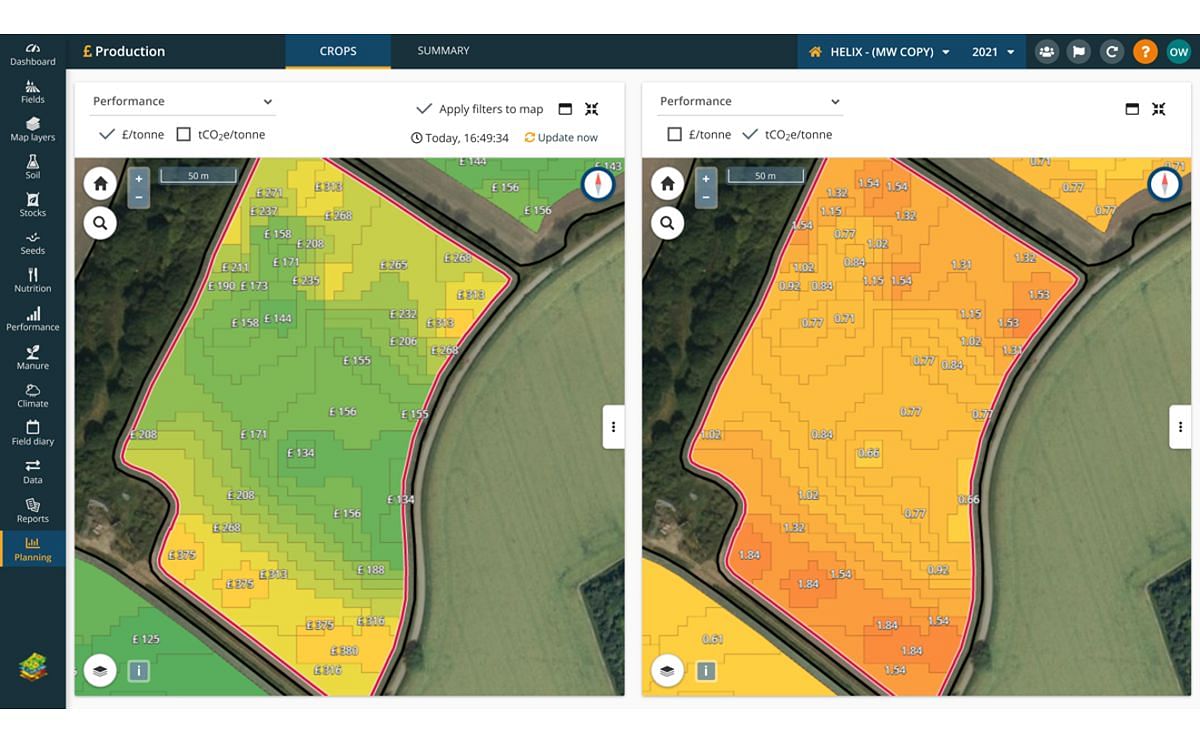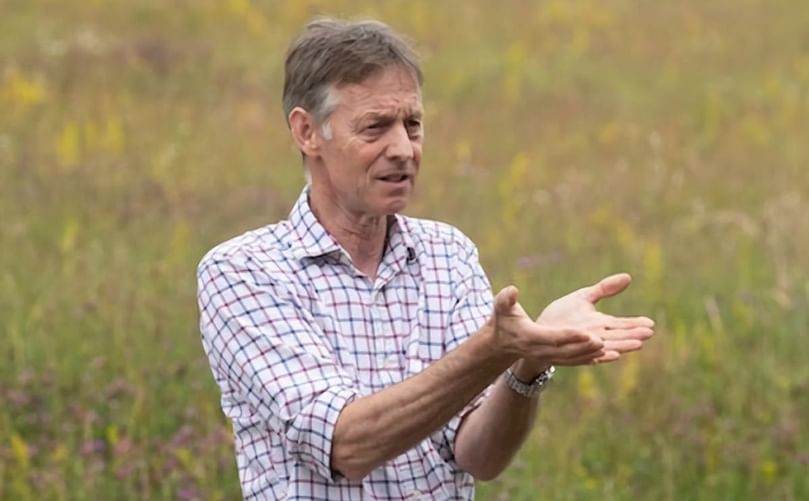Splitting carbon costs down to subfield level
Omnia introduces tool to estimate carbon footprint of agricultural production

It’s clearly understood that improved farm productivity is good for business and more recently, for carbon footprint. But the challenge has always been how to measure the cost of producing a particular crop with regards to carbon footprint.
Hutchinson's new Omnia Carbon cost of production tool has been designed to tackle just this, providing users with arguably one of the most in-depth carbon tools on the market. Trialed and tested across Hutchinson Helix farms, the Production tool allows growers to calculate the carbon cost of their operations on a per-field basis in terms of both £/tonne CO2/tonne or CO2/ha.
To date Omnia, users have been able to identify both the poorest and best performing areas of a field as well as create an average cost of production information. Now, Omnia’s newly developed Carbon Production tool allows users to this with Carbon.
From this autumn, users will be able to calculate on a field and sub-field basis, the financial and CO2 equivalent positions related to growing a particular crop. Provided in £/ha, £/tonne CO2/tonne or CO2/ha.
How it works
Within Omnia, the production tool hosts a 'SHED'. The shed stores information on machinery and variable cropping or input costs. Users can choose specific operations (power units) that they have used to grow a crop from drilling through to harvest. These figures are presented as £/ha costs or tonnes of CO2e/ha.
All the data is presented in map form, so it is possible to see how across a single field different areas cost different amounts to produce in terms of carbon and pounds, and then also to compare these costs on one screen.
Importantly, It is also possible to bring in additional data such as yield maps to see how yield impacts carbon and monetary efficiency. Unsurprisingly, yield is still key even in terms of carbon efficiency!
For users who also have the Omnia Field Scout app, they can log operations as they go along. So as the combine leaves the field, the yield maps automatically download into the system, and the cost of production and greenhouse emissions for that field for that year are calculated straight away.
The basis for these values has been provided by the Farm Carbon Toolkit. Becky Willson of the Farm Carbon Toolkit, says partnering with Hutchinsons has allowed the capabilities of the Farm Carbon Toolkit calculator to increase immensely.
Becky Willson:
"What’s been really interesting and exciting for us has been the ability to take the data contained within our carbon calculator – which has been designed for looking at the carbon balance across the whole farm – and break it down into the field, and even sub-field, level."Grower’s perspective
"This will allow users to delve into greater detail than was available before. In terms of what’s possible from a management perspective, this will enable growers to make far more accurate decisions as the impact of field management on carbon status is so clear."
The national Helix Technology Development Farm is hosted courtesy of Andrew and William Pitts of JW Pitts & Sons located at Mears Ashby and Whiston in Northamptonshire. This is where the testing and trialing of new technologies such as the Omnia Production tool takes place.
Andrew Pitts has seen the tool in action and for him, it offers another layer of accuracy to understanding what it costs to produce a crop – both financially and in terms of carbon.
He believes that the improved level of accuracy helps to make decisions going forward on a better-informed basis – and answer questions on how to better manage poor-performing areas of a field.
After two very wet winters, Andrew says the decision-making he’s faced this autumn is a prime example of how the Carbon Cost of Production tool could be used.
Andrew Pitts Farmer, agronomist, environmental consultant at JW Pitts:
"While our primary cultivation is always direct drilling, this year we’ve got some ground that’s a bit tight, so we’ve had to move the soil. Our environmental and carbon footprint is something we’re really prioritizing on a farm so, in my mind, I’ve had to think about which is the lowest carbon way of moving soil."Andrew believes that it’s becoming increasingly important to be able to show both financial profit and environmental sustainability – and a tool such as this puts him one step ahead in being able to do this.
"Is it hiring a Challenger? Or would I have been better to run a low disturbance subsoiler over the ground?. Now I’ll be able to take the guesswork out of it and make educated, informed decisions."

Andrew Pitts Farmer, agronomist, environmental consultant at JW Pitts
The work doesn’t stop here, the next stage of development within Omnia will allow users to create potential in the field 'what if' scenarios to measure the potential impact of particular practices and inputs on carbon emissions and yields. This will be available later this year.








